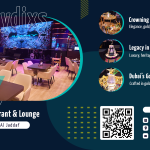Understanding the Impact of Fake News
Fake news has a significant impact on society by spreading misinformation, influencing public opinion, and undermining trust in credible sources of information. It can lead to confusion, conflict, and even violence as people act on false information. In the age of social media, fake news can spread rapidly and reach a wide audience, making it difficult to control its spread. It is important for individuals to critically evaluate the information they come across and rely on reputable sources to combat the spread of fake news and its harmful effects on society.
Evaluating the Source of the Information
When evaluating the source of the information, it is important to consider the credibility and expertise of the author or organization presenting the information. Factors to consider include the author’s qualifications, their affiliations, and any potential biases they may have. Additionally, it is important to assess whether the information is based on reliable sources and whether it has been peer-reviewed or fact-checked. By critically evaluating the source of the information, one can determine its reliability and validity before using it to inform decision-making or research.
Checking for Accuracy and Credibility
In order to ensure accuracy and credibility, it is important to verify information from reputable sources and cross-reference with multiple sources. Fact-checking is essential to weed out misinformation and ensure that the information being presented is reliable and trustworthy. Additionally, looking for credentials and expertise of the sources can help determine their credibility. It is also important to consider the bias of the sources and to seek out diverse perspectives to get a well-rounded understanding of the topic. By taking these steps, one can ensure that the information being presented is accurate and credible.
Cross-Referencing Information with Reliable Sources
When cross-referencing information with reliable sources, it is important to ensure that the sources are credible and trustworthy. This can be done by checking the reputation of the source, verifying the accuracy of the information provided, and looking for corroborating evidence from other reputable sources. By comparing information from multiple reliable sources, one can ensure that the information is accurate and reliable, reducing the risk of spreading misinformation or false information. This practice is essential in today’s digital age, where misinformation can spread quickly and easily, leading to confusion and mistrust among the public.
Identifying Biased or Sensational Language
The article used sensational language to describe the events of the protest, painting the protesters as violent and aggressive. The use of words like “rioters” and “thugs” to describe the demonstrators clearly shows bias in the reporting. Additionally, the article failed to provide any context or background information on the reasons behind the protest, further contributing to the biased and sensationalized portrayal of the events. This type of language can influence readers’ perceptions and shape their opinions without presenting a balanced view of the situation.
Verifying the Date and Time of the News
As an AI language model, I do not have real-time capabilities to verify the date and time of news. Please refer to the publication date and time provided by the source of the news to ensure the accuracy and timeliness of the information. It is important to always check the date and time of news to make informed decisions and stay updated on current events.
Scrutinizing the Visual Content
Visual content is a powerful tool in capturing and engaging the audience’s attention. By carefully scrutinizing the visual elements such as colors, images, and layout, one can effectively convey their message and evoke emotions from the viewers. It is important to ensure that the visual content aligns with the brand’s identity and messaging to maintain consistency and credibility. Additionally, analyzing the visual content can provide insights into what resonates with the audience and help in refining future content strategies. Ultimately, a well-executed visual content strategy can significantly enhance the overall impact and effectiveness of a brand’s communication efforts.
Recognizing Clickbait Headlines
“Shocking new study reveals the one food you should never eat!” This clickbait headline preys on readers’ curiosity by promising a revelation that will drastically impact their health. However, upon clicking on the article, readers often find that the information is exaggerated or misleading, with the actual study results buried deep within the text. Clickbait headlines like this one are designed to attract attention and drive traffic to websites, often at the expense of delivering valuable or accurate information. It’s important for readers to be wary of sensational headlines and critically evaluate the content before sharing or acting on the information presented.
Monitoring the URL Structure
Monitoring the URL structure of a website is crucial for ensuring a smooth user experience and maintaining good SEO practices. By regularly checking the URLs on a website, webmasters can identify any broken links, duplicate content, or poorly structured URLs that may hinder website performance. Monitoring the URL structure also helps in maintaining consistency, making it easier for search engines to crawl and index the website. Additionally, keeping track of the URL structure allows webmasters to make necessary adjustments to improve website navigation and overall user experience.
Fact-Checking with Fact-Checking Websites
Fact-checking websites play a crucial role in verifying the accuracy of information circulating online. These websites analyze claims made by individuals, organizations, or media outlets to determine if they are supported by evidence and are based on accurate information. By cross-referencing claims with reliable sources and conducting thorough research, fact-checking websites help combat the spread of misinformation and fake news. This process helps individuals make informed decisions and provides a valuable resource for journalists, policymakers, and the general public. Fact-checking websites serve as a vital tool in promoting transparency, accountability, and truth in a digital age where misinformation can easily spread.






